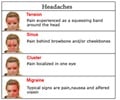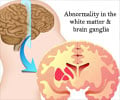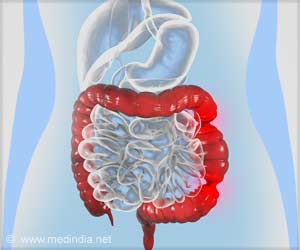
Previous research on migraine patients has shown atrophy of cortical regions in the brain related to pain processing, possibly due to chronic stimulation of those areas. Cortical refers to the cortex, or outer layer of the brain.
Much of that research has relied on voxel-based morphometry, which provides estimates of the brain's cortical volume. In the new study, Italian researchers used a different approach: a surface-based MRI method to measure cortical thickness.
"For the first time, we assessed cortical thickness and surface area abnormalities in patients with migraine, which are two components of cortical volume that provide different and complementary pieces of information," said Massimo Filippi, M.D., director of the Neuroimaging Research Unit at the University Ospedale San Raffaele and professor of neurology at the University Vita-Salute's San Raffaele Scientific Institute in Milan. "Indeed, cortical surface area increases dramatically during late fetal development as a consequence of cortical folding, while cortical thickness changes dynamically throughout the entire life span as a consequence of development and disease."
Dr. Filippi and colleagues used magnetic resonance imaging (MRI) to acquire T2-weighted and 3-D T1-weighted brain images from 63 migraine patients and 18 healthy controls. Using special software and statistical analysis, they estimated cortical thickness and surface area and correlated it with the patients' clinical and radiologic characteristics.
Compared to controls, migraine patients showed reduced cortical thickness and surface area in regions related to pain processing. There was only minimal anatomical overlap of cortical thickness and cortical surface area abnormalities, with cortical surface area abnormalities being more pronounced and distributed than cortical thickness abnormalities. The presence of aura and white matter hyperintensities—areas of high intensity on MRI that appear to be more common in people with migraine—was related to the regional distribution of cortical thickness and surface area abnormalities, but not to disease duration and attack frequency.
Advertisement
Additional research is needed to fully understand the meaning of cortical abnormalities in the pain processing areas of migraine patients, according to Dr. Filippi.
Advertisement
The researchers are conducting a longitudinal study of the patient group to see if their cortical abnormalities are stable or tend to worsen over the course of the disease. They are also studying the effects of treatments on the observed modifications of cortical folding and looking at pediatric patients with migraine to assess whether the abnormalities represent a biomarker of the disease.
Source-Eurekalert














